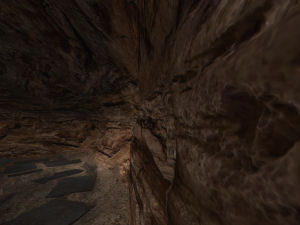Introduction
Enemy Territory: QUAKE Wars (ETQW) is the latest game using the DOOM 3 engine, or as id Software rechristened it, the id Tech 4 engine. Although the normal map, stencil shadow heritage is still present many things have changed both under the hood and in end-user effects and you could arguably call this version 1.5 of the engine.
Last year we published a small interview with Splash Damage's Technical Director, Arnout van Meer, touching on many different subjects. Now that the game is in stores it's time to delve a little deeper into the new features on the improved DOOM 3 engine that powers QUAKE Wars and see how it compares to other current and upcoming engines. Throughout this article you'll find quotes from Arnout as well as Mike Armstrong, Senior Graphics Programmer at Splash Damage, providing some of the reasoning behind a few technical aspects of the engine.
If you are interested in the game proper, you can find our review of the game here.
Once upon a time
When DOOM 3 was released back in August 2004, DirectX 9 was coming into its own after two years of hardware availability and that engine only scratched the surface of the floating point fragment program programmability that has become so established today. The engine supported both fixed function parts like the NV17 as well as the DirectX 8 level cards powered by NV2x or R2xx. Even when using the "ARB2" path that only ran in DirectX 9 level cards the game still looked fairly similar with only a (slightly more accurate) ubiquitous light interaction shader and a few special effects, like heat distortion, sprinkled throughout.
The major change with ETQW is that the renderer was stripped of its fixed function (and integer fragment processing) legacy path and is now fully shader based. The engine will use either pre-compiled assembly programs or Cg. What was mostly just a handful of programs in DOOM 3 has now blossomed to over 350 different ones in this game.
Apart from the usual normal mapping that D3 used, ETQW also features parallax mapping. This technique is used sparingly as the texture warp artefacts can sometimes be troublesome. Subtlety is also the operating word where Bloom is concerned in ETQW with a faint blur and an additive blend. Finally, to smooth the LoD transitions, the game uses Alpha2Coverage which is a technique also being employed in the upcoming Crysis. The game uses a fixed image pattern for dithering between LoDs or the available multi-sample pattern when AA is enabled. Apparently, the mutating pattern technique used by the R6xx cards to improve perceived AA quality does not interfere because the pattern doesn't change per frame.
|
Close up of a surface with parallax mapping |


